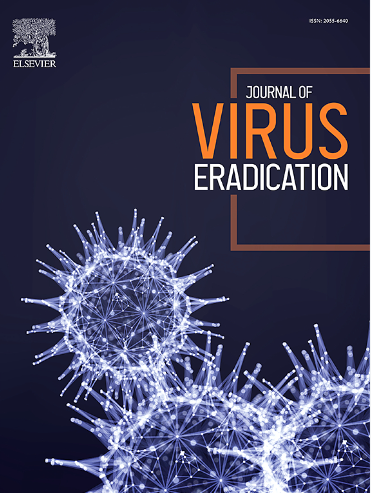High-level adenovirus-neutralizing antibodies plasma beneficial for adenovirus type 7 (Adv7) induced pediatric severe ARDS
IF 2
4区 医学
Q2 IMMUNOLOGY
引用次数: 0
Abstract
Objective
Respiratory failure and acute respiratory distress syndrome (ARDS) caused by adenovirus pneumonia (AVP) present significant challenges for pediatricians. High-level adenovirus-neutralizing antibody plasma (HL-ANAP), containing elevated levels of neutralizing antibodies (NAbs), might represent a valuable passive immunotherapy option. To assess the therapeutic effects, we investigated three cases diagnosed with adenovirus type 7 (Adv7)-induced severe ARDS, which required combined therapy with extracorporeal membrane oxygenation (ECMO) and HL-ANAP.
Methods
Blood samples from three patients with Adv7-induced ARDS were collected before HL-ANAP administration, and at 6, 12, 24, 48, and 72 hours, and 7, 21, and 28 days after treatment. We measured Adv7 viral load, NAb titers, and cytokine levels in the serum, describing the observed trends.
Results and discussion
All patients survived. Before HL-ANAP transfusion, Adv7 viral loads exceeded 1∗10^7. Adv7 viral loads gradually decreased within 72 hours after HL-ANAP transfusion, accompanied by a rising trend in NAb titers. IL-6 and IL-8 levels decreased sharply during the first 24 hours post-HL-ANAP transfusion, followed by a slower decline.
Conclusion
HL-ANAP may be effective in treating ARDS induced by severe type-7 adenoviral pneumonia in children. This approach may reduce adenovirus load, decrease systemic inflammation, and improve clinical outcomes. The neutralizing antibody's activity against the virus may occur within 24–72 hours post-infusion in vivo.
高水平的腺病毒中和抗体血浆对7型腺病毒(Adv7)诱导的儿童严重急性呼吸窘迫综合征有益
目的腺病毒肺炎(AVP)引起的呼吸衰竭和急性呼吸窘迫综合征(ARDS)是儿科医生面临的重大挑战。含有高水平中和抗体(nab)的高水平腺病毒中和抗体血浆(HL-ANAP)可能是一种有价值的被动免疫治疗选择。为了评估治疗效果,我们研究了3例被诊断为7型腺病毒(Adv7)诱导的严重ARDS,需要体外膜氧合(ECMO)和HL-ANAP联合治疗。方法采集3例adv7诱导的ARDS患者在给药前、给药后6、12、24、48、72 h和7、21、28 d的血样。我们测量了Adv7病毒载量、NAb滴度和血清中的细胞因子水平,描述了观察到的趋势。结果与讨论所有患者均存活。在HL-ANAP输注前,Adv7病毒载量超过1 * 10^7。HL-ANAP输注后72小时内Adv7病毒载量逐渐下降,同时NAb滴度呈上升趋势。IL-6和IL-8水平在hl - anap输注后24小时内急剧下降,随后下降缓慢。结论hl - anap可有效治疗儿童重症7型腺病毒性肺炎所致ARDS。这种方法可以减少腺病毒载量,减少全身炎症,改善临床结果。中和抗体对病毒的活性可在体内输注后24-72小时内发生。
本文章由计算机程序翻译,如有差异,请以英文原文为准。
求助全文
约1分钟内获得全文
求助全文
来源期刊

Journal of Virus Eradication
Medicine-Public Health, Environmental and Occupational Health
CiteScore
6.10
自引率
1.80%
发文量
28
审稿时长
39 weeks
期刊介绍:
The Journal of Virus Eradication aims to provide a specialist, open-access forum to publish work in the rapidly developing field of virus eradication. The Journal covers all human viruses, in the context of new therapeutic strategies, as well as societal eradication of viral infections with preventive interventions.
The Journal is aimed at the international community involved in the prevention and management of viral infections. It provides an academic forum for the publication of original research into viral reservoirs, viral persistence and virus eradication and ultimately development of cures.
The Journal not only publishes original research, but provides an opportunity for opinions, reviews, case studies and comments on the published literature. It focusses on evidence-based medicine as the major thrust in the successful management of viral infections.The Journal encompasses virological, immunological, epidemiological, modelling, pharmacological, pre-clinical and in vitro, as well as clinical, data including but not limited to drugs, immunotherapy and gene therapy. It is an important source of information on the development of vaccine programs and preventative measures aimed at virus eradication.
 求助内容:
求助内容: 应助结果提醒方式:
应助结果提醒方式:


